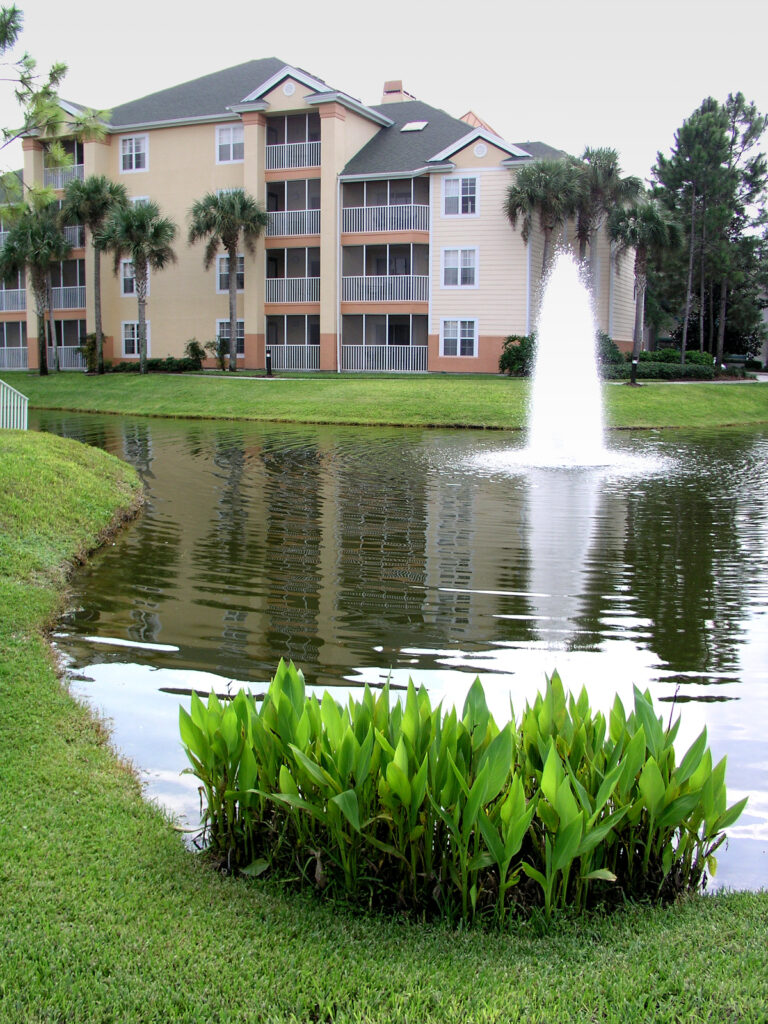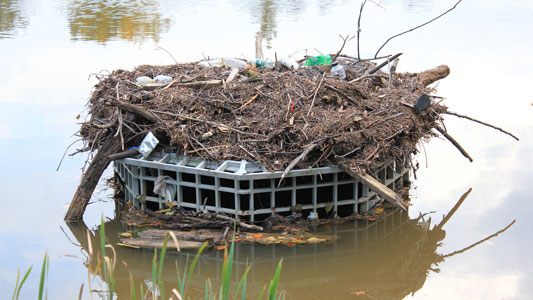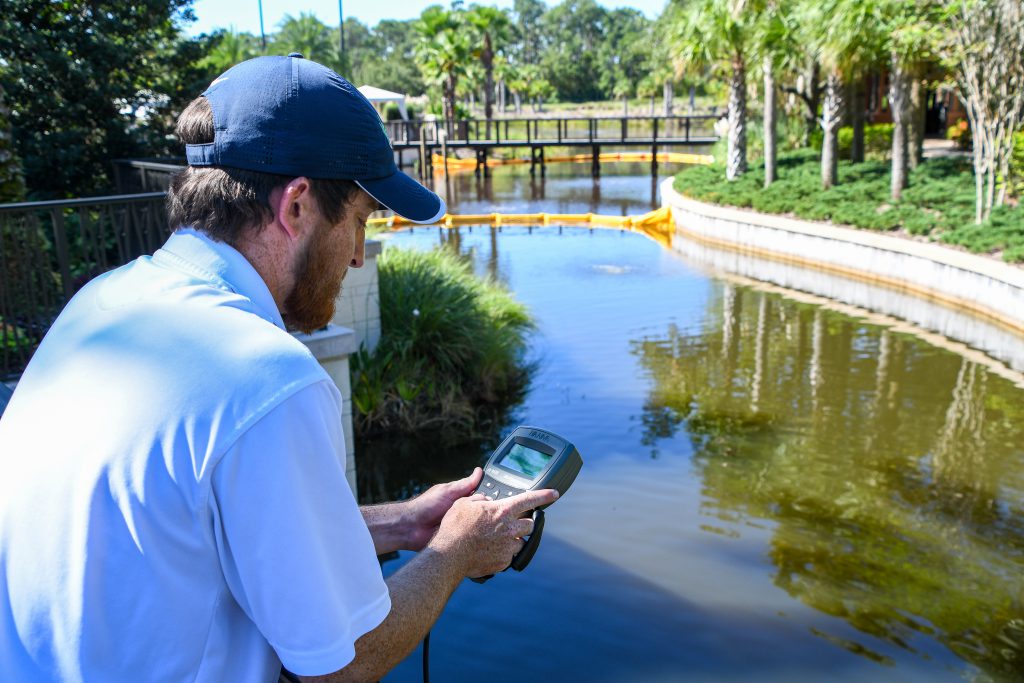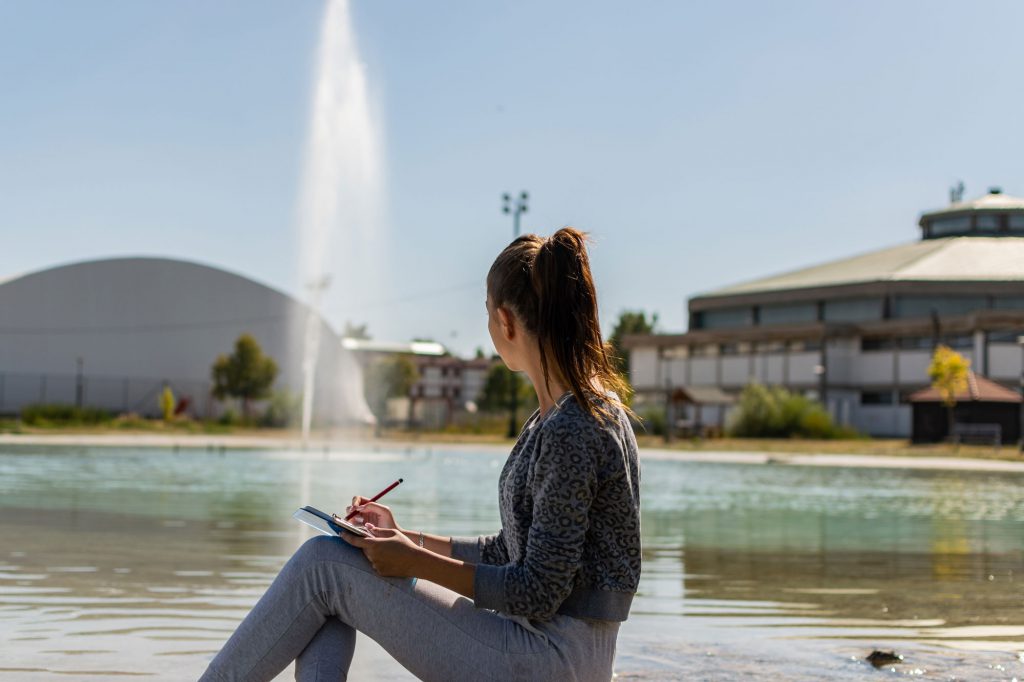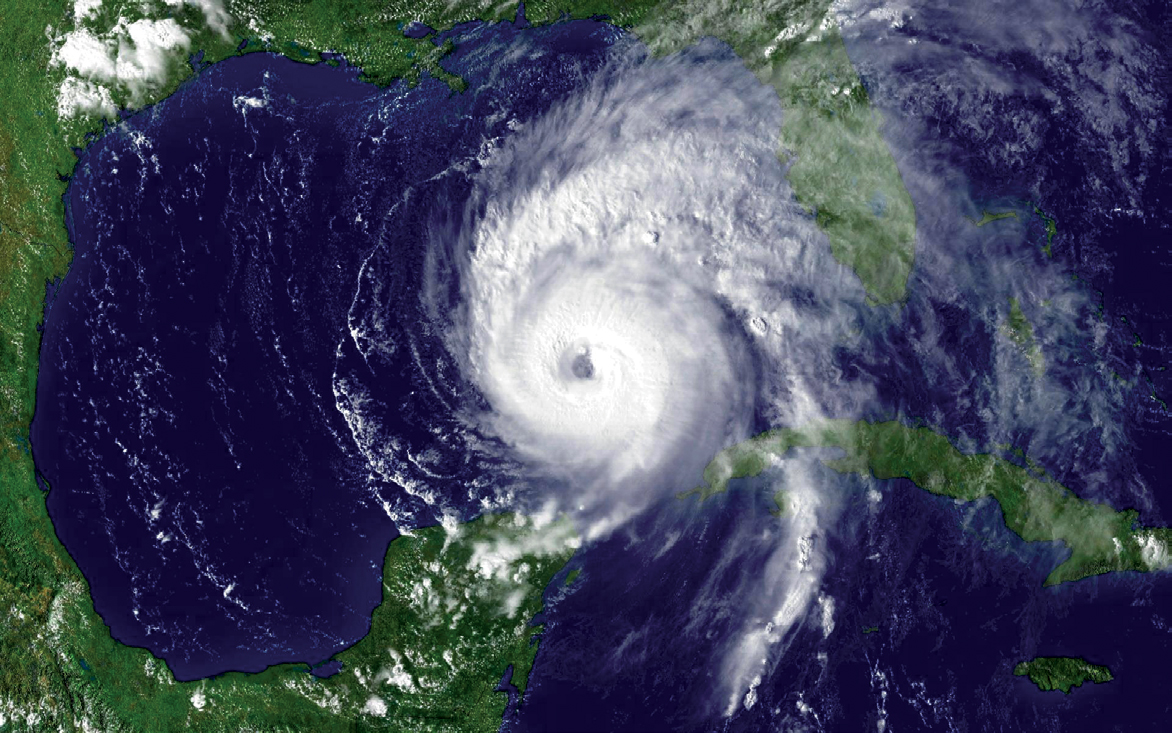
The Guide To Hurricane Prep & Clean Up in Florida
As a property manager, representative, or member of a community in Florida, you probably know that hurricane season is defined as June through November – but did you know that the National Hurricane Center characterizes mid-August through October as peak season? You may also be well-aware of what goes into prepping in the event of a severe storm. But do you know that properly maintaining, preparing, and recovering lakes, retention ponds, and stormwater facilities can prevent further damage and health risks?
Recovering from a natural disaster is stressful and arduous. Decision-makers can set their communities up for success before these natural disasters by planning ahead, so they can spring into action and focus on other urgent priorities when the time comes.
Why Does Florida Have So Many Stormwater Ponds, Retention Ponds & Canals?
The infamous and deadly hurricanes of 1926 and 1928 led to a state-wide effort to implement flood control measures. One such effort was draining Lake Okeechobee into the Gulf of Mexico and the Atlantic Ocean. This reduced water flow to the Everglades and created the infrastructure needed to support new agricultural land and development. Since then, five water management districts have been established throughout Florida to provide the drainage needed to support the state’s three key economic drivers: agriculture, tourism, and development. Today, the majority of lakes and ponds engineered and developed within Florida are man-made systems.
With an average of 60 inches of rain per year and hurricanes that produce as much as 2 inches of rain during an event, effective drainage and flood control systems are vital to protect land/water resources, the population, and the economy. These systems are not just designed to prevent flooding, but also clean up stormwater run-off, restore water resources, and recharge aquifers for drinking water. For stormwater systems to function at their highest and most efficient use, it is important to understand that ponds need balanced dissolved oxygen (DO) levels and native buffer plants along their edges to maintain strong shorelines.
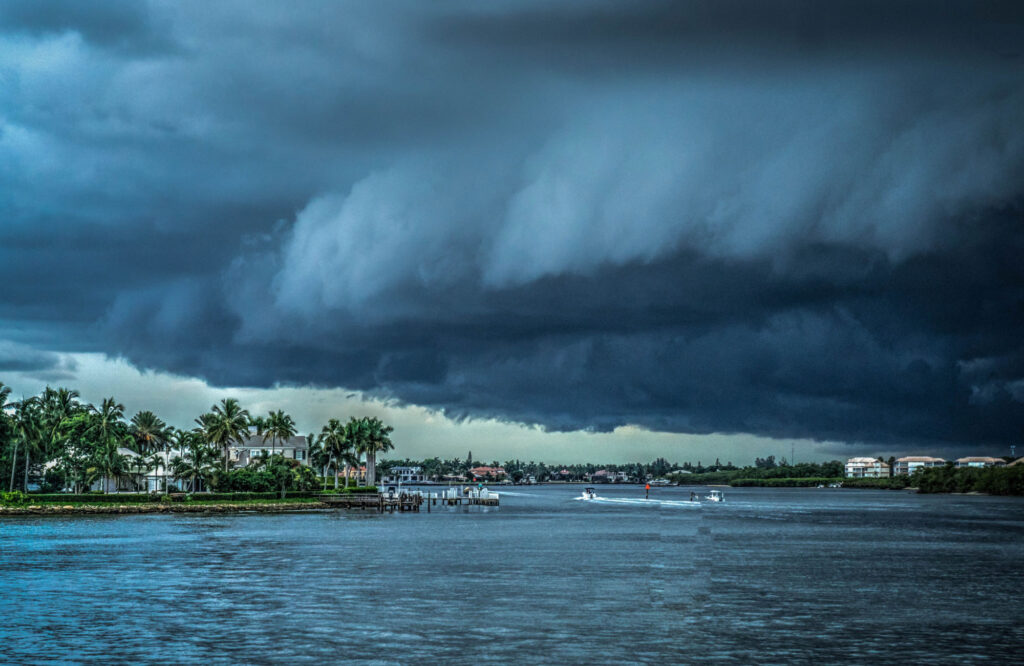
What Are the Impacts Storms and Hurricanes Have On Waterbodies?
After a storm, lakes, ponds, canals, and other waterways may be affected in several ways – nutrient overload, fish kills, shoreline erosion, and standing water that allows pest breeding.
Nutrition Overload:
In the wake of heavy rains or flooding, especially after a hurricane or storm, run-off in the form of fertilizers, clippings, pesticides, herbicides, waste, oil, and gas are washed into the water. This can overwhelm the nutrient balance and lead to algae and invasive plant growth, Harmful Algae Blooms (HABs), swarms of midges and disease-carrying mosquitoes, and other undesirable symptoms.
Fish Kills:
Closely linked to nutrient overload, a fish kill occurs when there are sudden drops in DO levels. Strong winds and rainfall from a hurricane can quickly churn up oxygen-poor water from the bottom of the waterway. While not necessarily indicative of a fish kill, hurricanes can also pull in salinated water, which can harm fresh or brackish water fish.
Shoreline Erosion:
As time goes on and waters repeatedly rise and fall during storms and hurricanes, lake and pond shorelines can degrade. The more shorelines erode, the more likely the land will collapse into the water, reducing the capacity to hold water. As a result, roads and homes are more likely to flood and may even sink into waterways during heavy storms. Furthermore, this can unearth cables and electrical lines, creating dangerous conditions for the public and expensive repairs for municipalities and HOAs.
Standing Water/Pest Breeding:
Standing water following a significant weather event like a hurricane or tropical storm is extremely common. Even after floodwaters recede, the ground remains saturated and pockets of standing water will likely remain in low-lying areas. Depending on how infrastructure and utilities were impacted by the storm, it may also take some time before fountains and aeration equipment can safely resume operation. These conditions are ideal for pest breeding, and communities that experience a flood event will often find themselves dealing with a significant surge in midge and mosquito populations in the weeks following. Not only are mosquito populations extremely annoying, they also escalate the transmission of mosquito-borne diseases like Zika and West Nile.
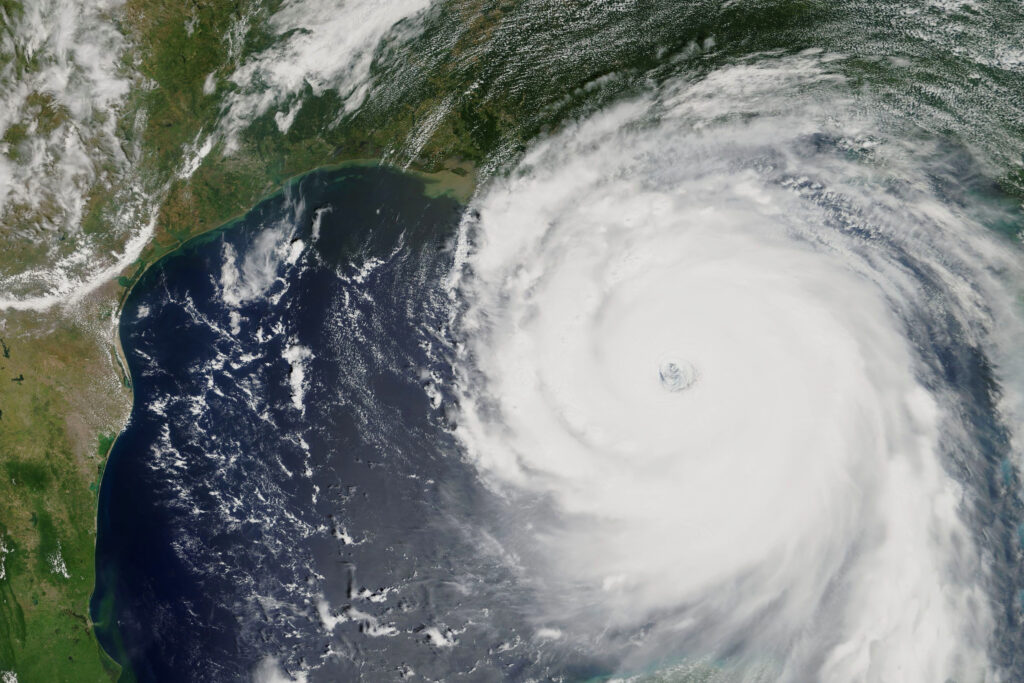
Prepping Lakes and Ponds Ahead of Storms and Hurricanes
While many Florida waterbodies are designed to handle hurricanes and other large storms, ongoing maintenance is necessary to ensure the systems are working correctly and fit to face unpleasant weather.
As part of your ongoing maintenance and management plans, you should make sure your aquatic management team includes the following in their practices:
- All stormwater inlets, outlets, drainage pipes, spillways, and ditches should be maintained and kept free of any blockages such as trash, nuisance vegetation, or sediment build-up.
- Make sure that your waterbodies are also kept free of trash and debris (and that run-off in the form of clippings and leaves are bagged up rather than washed down to shorelines) as these can create blockages when dredged up by winds.
- Ensure that aquatic plants and vegetation are kept in check within the waterbody with a proper aquatic plant management plan.
- Monitor shorelines for muskrat holes or depressions in the soil. These can overflow and collapse during a storm, leading to eroded shorelines.
- Keep your water moving via aeration systems and fountains to help prevent mosquito and midge breeding, as well maintain optimal water quality conditions.
- Have a contingency mosquito/midge control plan in place for more mild storms that do not trigger state responses.
SOLitude’s sister company, Vector Disease Control International (VDCI), partners with government entities to develop emergency response contingency plans to help ensure communities are prepared to swiftly respond to a mosquito emergency in the wake of hurricanes and other natural disasters.
There are also several actions you can take when you know a hurricane or tropical storm is imminent:
- Turn off any fountains, diffusers, or other installed aeration systems. If possible, remove them and safely store them.
- Consider installing a debris guard in your overflow pipes to help reduce inlet clogs.
- Double-check pipes and drainage sites for debris if this can be done safely.
- Secure yard and shore items such as potted plants, porch furniture, fishing equipment, and boats to keep them from being blown or washed into the lakes and ponds.
For lakes, canals, and stormwater pond systems, this includes:
- Provide maintenance to waterbodies and their structures
- Take precautions to prevent pest breeding caused by standing water
- Monitor water quality and nutrient loads from run-off
- Provide maintenance to waterbodies and their structures
One of the first things you should do prior to turning back on any equipment or resuming any use of the waterbody is making sure that it is in safe, operable condition.
Start by checking where water enters and leaves the lake or pond. This includes pipes, dams, and drains. Any debris that has accumulated will need to be removed to allow water to flow freely. Please take caution as large blockages can cause outbursts of water or even create a suction effect. It is recommended to use rakes, hose sprays, and other similar methods to remove debris rather than your own hands to prevent injury.
This is also the time to check on any docks, boats, fountains, or aeration equipment that may have weathered the storm. You will also want to survey the shoreline for any signs of erosion from heavy winds or waves – or even unearthed trees or poles – and implement any shoreline restoration efforts as needed before conditions worsen.
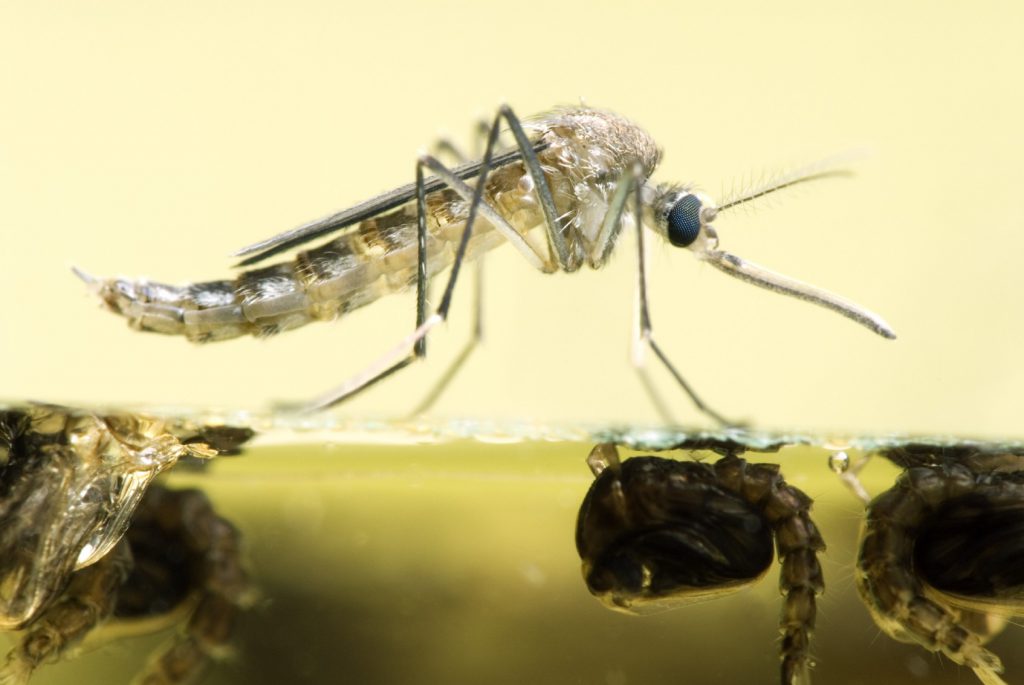
Take Precautions to Prevent Pest Breeding Caused by Standing Water
Standing water and moist soil are prime environments for mosquito and midge breeding. When it comes to mosquito control following a serious storm event, you should know that your state’s relevant agencies will likely have a contingency program in place with a service provider that is qualified to provide wide-scale applications to knock down mosquito populations – often by air if ground conditions are too difficult. In Florida, this work is typically contracted through the Department of Agriculture and Consumer Services (DACS) in coordination with other state and federal agencies like the Federal Emergency Management Agency (FEMA).
Monitor Water Quality and Nutrient Loads From Run-Off
Run-off and storm surge caused by hurricanes, heavy rains, and flooding can take a significant toll on water quality. Waters that moved from the ocean or brackish environments can increase the salinity of your freshwater lakes and ponds. Run-off in the form of fertilizers, oil from roads, new bacteria, and a multitude of other sources can also wreak havoc by creating wildly imbalanced conditions.
The first step in restoring optimal water quality conditions is professional water quality testing. Scientists are able to evaluate a full panel of characteristics, including:
- Total phosphorus
- Total nitrogen
- Dissolved oxygen
- Chlorophyll-a
- HABs and cyanotoxins
- Algae identification
- Microbial bacteria
- pH
- Conductivity
- Turbidity
- Alkalinity
- Salinity
- Ammonia
Hurricanes are dangerous and sometimes deadly events that can upend an entire region for weeks. When it comes to recovery efforts, lakes and ponds usually aren’t first on the list of priorities, but restoring their functionality is essential to facilitate water drainage and prevent the spread of disease and other risks that can plague community members during such strenuous times.
Protect Your Aquatic Assets with A Plan
Community leaders have countless responsibilities to take care of following natural disasters. Residents look to them for help and hold them accountable if recovery efforts fall short. By partnering with experienced freshwater management providers, community leaders can develop a plan of action ahead of time and rest assured that their lakes and ponds receive swift maintenance. Contact the experts to begin designing your annual management program today.
SOLitude Lake Management is a nationwide environmental firm committed to providing sustainable solutions that improve water quality, enhance beauty and preserve natural resources.
SOLitude’s team of aquatic scientists specializes in the development and execution of customized lake, stormwater pond, wetland and fisheries management programs. Services include water quality testing and restoration, algae and aquatic weed control, installation and maintenance of fountains and aeration systems, shoreline erosion control, muck and sediment removal and invasive species management. SOLitude partners with homeowners associations, golf courses, private landowners, businesses and municipalities. SOLitude Lake Management is part of Rentokil, a leading business services company, operating across the United States, Canada and Puerto Rico.
For more information, visit SOLitude Lake Management at solitudelakemanagement.com, and connect on Facebook, LinkedIn and Twitter.








